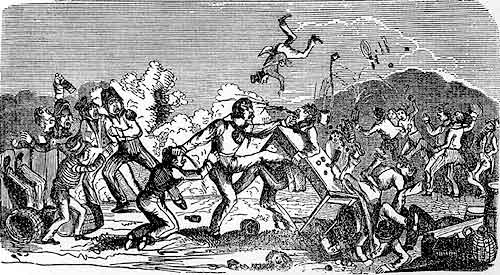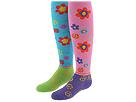Understanding Chinese Culture #2
/ Cyrille Javary has some interesting things to say about the concept of yin-yang:
Cyrille Javary has some interesting things to say about the concept of yin-yang:Since the idea of duality is so familiar to us, we are often presented with lists of the opposite qualities of yin and yang, such as:
yin yang
dark light
cold hot
low high
night day
interior exterior
rest action
This kind of list may be helpful, but it has one serious disadvantage, and that is the implied existence of the verb "to be" connecting the headings with each of their attributes. This kind of copulative verb, which binds a subject and an object, does not exist in Chinese. A Chinese cannot say that yin is dark, cold, or low. He or she cannot therefore think that dark, cold and so forth, are characteristics of yin but only that they are the results that manifest because of its action. Yin is not dark, it is a movement of darkness; it is not cold but a tendency toward getting cold; it is neither interior nor at rest but rather turning inwards and slowing down. The best way to express this particularity might be to use the verb "to become" in place of "to be." Therefore, yang would not be light but becoming light; it is not hot, exterior, or action but is becoming hot, becoming external, or becoming action.
Yin and yang are the concerted movements of life and exist only within the dynamics that unite them. (Javary 1997, p.7-8)
Roger Ames adds something to this thought and returns us to the concept yet not-concept of Dao:
In fact, categories used to define a Chinese world are fluid, and must be seen as often crossing the borders of time, space, and matter in an unfamiliar way. Dao so understood offends against the most basic of Western cultural distinctions, mixing together subject and object, as well as things, actions attributes, and modalities. Dao is at once"what is" (things and their attributes) and "how things are" (actions and their modalities), it is "who knows" as well as "what is known." (Ames 1998, 27-28)
Referring back to the previous post, ....The way in which conduct resolves and rectifies qi implies at least a two directional quality of time. Such action does not require intentionality (yi), rather it is our true nature (de), it is wuwei. Our completely resolved ancestors are like a supportive background to our actions. Resolved ancestors express themselves through us effortlessly as appropriate conduct --gongfu.

 The perfect expression of a Daoist practice is simultaneously resolving and inspiring. Inappropriate conduct leaves things (qi) unresolved. Appropriate conduct resolves things (zhengqi). Unresolved ancestors manifest through the actions of those still living -- their descendants. Thus, we can see religious merit or gongfu, as the practice of resolving our ancestors inappropriate conduct through our own appropriate conduct. (
The perfect expression of a Daoist practice is simultaneously resolving and inspiring. Inappropriate conduct leaves things (qi) unresolved. Appropriate conduct resolves things (zhengqi). Unresolved ancestors manifest through the actions of those still living -- their descendants. Thus, we can see religious merit or gongfu, as the practice of resolving our ancestors inappropriate conduct through our own appropriate conduct. ( In recent years a lot of qigong that is popularly taught has been categorized as martial arts qigong. (I think it is mistake to use this category in the first place, but if we do use it we will have to divide it up further.) This would be qigong created by and for people who were put in the position of needing to fight.
In recent years a lot of qigong that is popularly taught has been categorized as martial arts qigong. (I think it is mistake to use this category in the first place, but if we do use it we will have to divide it up further.) This would be qigong created by and for people who were put in the position of needing to fight. xing yi and bagua. This type has the flavor and reluctance characteristic of those who cultivate weakness. In this tradition the battle field is viewed as an expression of qi. The battle field substitutes for the body in which the smooth flowing of qi is a priority, not avoiding war, but being uncontentious. Looking for resolution is different than trying to win, although winning may be necessary for your survival. This is not a passive tradition, in fact attacking first can easily be the quickest cleanest resolution with the least loss of life on both sides. How this tradition came about is an interesting question I plan to continue exploring. Perhaps people who had been cultivating weakness, were drafted and this was a natural expression of their circumstance. This third traditions takes the longest to develop usable skills, and seems like a privileged position with in a military world.
xing yi and bagua. This type has the flavor and reluctance characteristic of those who cultivate weakness. In this tradition the battle field is viewed as an expression of qi. The battle field substitutes for the body in which the smooth flowing of qi is a priority, not avoiding war, but being uncontentious. Looking for resolution is different than trying to win, although winning may be necessary for your survival. This is not a passive tradition, in fact attacking first can easily be the quickest cleanest resolution with the least loss of life on both sides. How this tradition came about is an interesting question I plan to continue exploring. Perhaps people who had been cultivating weakness, were drafted and this was a natural expression of their circumstance. This third traditions takes the longest to develop usable skills, and seems like a privileged position with in a military world. barehanded fighting that still influences how we think about fights today.
barehanded fighting that still influences how we think about fights today. It was a throwing game. If any part of your body besides your feet touched the ground you lost the bout.
It was a throwing game. If any part of your body besides your feet touched the ground you lost the bout. In the religious Daoist tradition stories are considered qi transmissions. To study personally with a great bagua or qigong teacher is of immeasurable value but we can receive qi transmissions in many different ways.
In the religious Daoist tradition stories are considered qi transmissions. To study personally with a great bagua or qigong teacher is of immeasurable value but we can receive qi transmissions in many different ways. Some guy named Jerome Weng in Singapore responded to my Youtube video
Some guy named Jerome Weng in Singapore responded to my Youtube video  know eight palm changes which correspond to the eight trigrams, you can practice each hexagram too. Think of each hexagram as a transition between two trigrams and practice that transition. (So for example, hexagram 63 is li [fire] transitioning into kan [water].) On divination days, improvise!
know eight palm changes which correspond to the eight trigrams, you can practice each hexagram too. Think of each hexagram as a transition between two trigrams and practice that transition. (So for example, hexagram 63 is li [fire] transitioning into kan [water].) On divination days, improvise! All Traditional Chinese subjects have three types of teaching:
All Traditional Chinese subjects have three types of teaching: Someone else who believes that gongfu is entirely about fighting are Brian Kennedy and Elizabeth Guo, authors of
Someone else who believes that gongfu is entirely about fighting are Brian Kennedy and Elizabeth Guo, authors of  What does quan mean? As in the terms taijiquan, xingyiquan, shaolin quan. The standard answer is that it literally means fist, but in context means boxing or art. Thus taijiquan means 'the taiji style of boxing' or 'the fighting art of taiji.' (For a definition of
What does quan mean? As in the terms taijiquan, xingyiquan, shaolin quan. The standard answer is that it literally means fist, but in context means boxing or art. Thus taijiquan means 'the taiji style of boxing' or 'the fighting art of taiji.' (For a definition of  As I've said elsewhere
As I've said elsewhere 
 Everyone interested in Chinese Martial Arts should have a copy of
Everyone interested in Chinese Martial Arts should have a copy of  The second reason is that it is material that helps to put internal arts in context. Shuijiao is a kind of gentrified form of Mongolian wrestling, stand up throws, with similarities to Judo take downs and Sumo too.
The second reason is that it is material that helps to put internal arts in context. Shuijiao is a kind of gentrified form of Mongolian wrestling, stand up throws, with similarities to Judo take downs and Sumo too. 